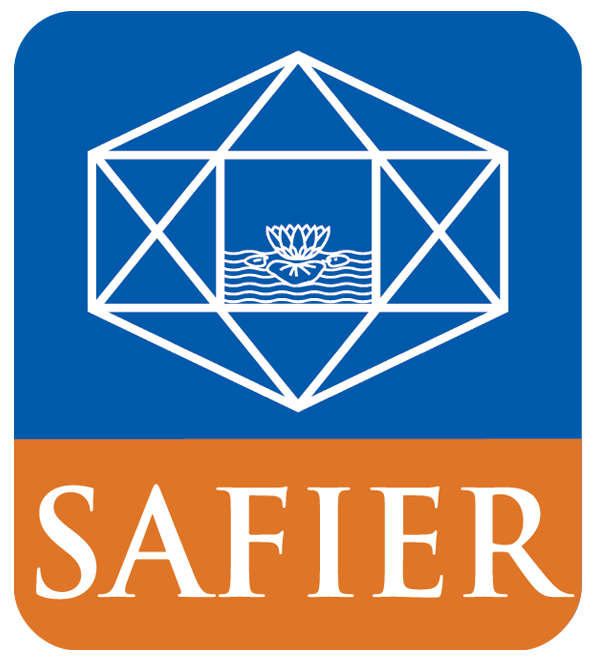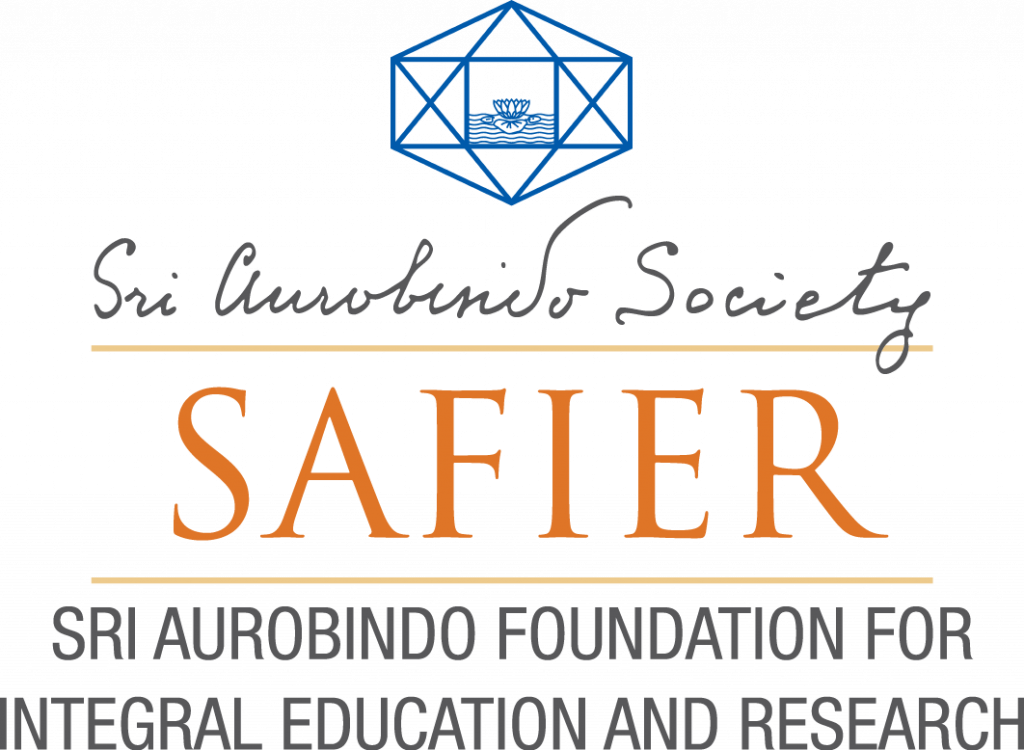Date: Dec 8–29, 2014 Place: Society House, Sri Aurobindo Society, Puducherry
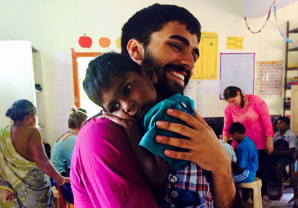 In December 2014, a group of 15 students and faculty from the University of Oregon, USA, spent 21 days (December 8–29) in Puducherry, hosted by the Sri Aurobindo Society (SAS). The group was headed by Dr Surendra Subramani, who was also instrumental in organizing the programme itinerary with the assistance of the staff from the SAS. He is also singularly responsible, since 2011, for establishing a collaborative relationship between the University of Oregon (UO) and the Sri Aurobindo Society.
In December 2014, a group of 15 students and faculty from the University of Oregon, USA, spent 21 days (December 8–29) in Puducherry, hosted by the Sri Aurobindo Society (SAS). The group was headed by Dr Surendra Subramani, who was also instrumental in organizing the programme itinerary with the assistance of the staff from the SAS. He is also singularly responsible, since 2011, for establishing a collaborative relationship between the University of Oregon (UO) and the Sri Aurobindo Society.
The programme goals and the selection of students and other participants were focused within the fields of education and human services. Their ages ranged from 20 to 23 years. These students were carefully selected over a period of a year, wherein their motives, goals, and levels of cultural sensitivity were very carefully evaluated. All these students were required to take a 10-week course at the University prior to departure to better prepare and orient their outlook for the programme in Puducherry.
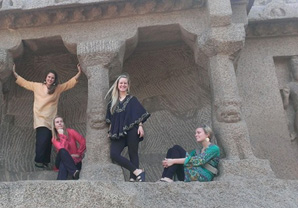 From the offset, the goal of the programme was multidimensional. The challenge was to expose the students within a short span of 21 days to Indian culture, history, philosophies, and social fabric and also introduce them to the current successful innovative projects of SAS that have been developed for the growth and progress of Indian society from grassroots upwards. Careful thought was given to avoid a superficial journey of India, much as what one would expect in a tourist travelogue, but to consider it more as an introduction and an in-depth exploration of the sciences and arts of India and what she has to contribute to the world at large. On another level, it was an opportunity to show the American students a few alternatives and more sustainable ways of living, within the spheres of health care, diet, architecture, village development and education that they could be aware of for possible implementation in the United States. In this regard, it is also meant to show through actual successful implementation of organizational structures, management, and leadership. And yet on a personal level to allow these students to be exposed to various ancient indigenous Indian sciences that are still very relevant, but were formulated thousands of years ago with regard to self-care on an emotional, psychological, spiritual and physical level of well-being.
From the offset, the goal of the programme was multidimensional. The challenge was to expose the students within a short span of 21 days to Indian culture, history, philosophies, and social fabric and also introduce them to the current successful innovative projects of SAS that have been developed for the growth and progress of Indian society from grassroots upwards. Careful thought was given to avoid a superficial journey of India, much as what one would expect in a tourist travelogue, but to consider it more as an introduction and an in-depth exploration of the sciences and arts of India and what she has to contribute to the world at large. On another level, it was an opportunity to show the American students a few alternatives and more sustainable ways of living, within the spheres of health care, diet, architecture, village development and education that they could be aware of for possible implementation in the United States. In this regard, it is also meant to show through actual successful implementation of organizational structures, management, and leadership. And yet on a personal level to allow these students to be exposed to various ancient indigenous Indian sciences that are still very relevant, but were formulated thousands of years ago with regard to self-care on an emotional, psychological, spiritual and physical level of well-being.
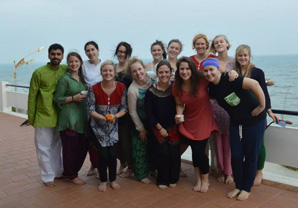 Sri Aurobindo Society has among its members many individuals, who have the necessary expertise and experience in many of the identified areas. They were called upon to provide the positive curriculum to educate the students on many of these topics. Furthermore, the Society also has developed associations with organizations that were made available for the students to have hands-on experience to observe or participate in their respective functions.
Sri Aurobindo Society has among its members many individuals, who have the necessary expertise and experience in many of the identified areas. They were called upon to provide the positive curriculum to educate the students on many of these topics. Furthermore, the Society also has developed associations with organizations that were made available for the students to have hands-on experience to observe or participate in their respective functions.
A brief synopsis of the program as conducted is as follows. During the first week each day began with the practice of Pranayama and Asanas. The goal was to show students the benefits of yoga practices for their own overall well-being and health. Within a week the students could see the benefits of the Asanas in their daily work.
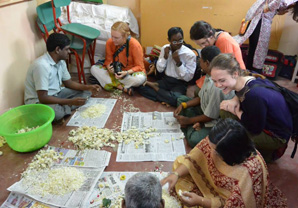 Introduction and service work with both the SARVAM project and the Satya Special School provided opportunities for the UO students to see the challenges these projects face and yet the progress made for the betterment of their respective constituents. At the SARVAM project, the important distinction observed by the UO students was the dedication and focus towards education the children in the village showed. In many respects, though the village did not have the privileged comforts found in the US, the level of respect, discipline, healthy curiosity, and passion for education was something the UO students have not seen in American schools. At the Satya Special School, it was noted by some of the students that the level of genuine human interaction practiced by the supervisors was almost non-existent in similar American establishments due to legal requirements. The American establishments, as one student noted, deals with their clients in a very clinical manner, but lacked the human touch, while at Satya, which lacked the sophistication of the physical infrastructure, teemed with human touch. The students recommended to the Satya supervisors to continue what they were doing, while only selectively choosing what was being offered through the American system.
Introduction and service work with both the SARVAM project and the Satya Special School provided opportunities for the UO students to see the challenges these projects face and yet the progress made for the betterment of their respective constituents. At the SARVAM project, the important distinction observed by the UO students was the dedication and focus towards education the children in the village showed. In many respects, though the village did not have the privileged comforts found in the US, the level of respect, discipline, healthy curiosity, and passion for education was something the UO students have not seen in American schools. At the Satya Special School, it was noted by some of the students that the level of genuine human interaction practiced by the supervisors was almost non-existent in similar American establishments due to legal requirements. The American establishments, as one student noted, deals with their clients in a very clinical manner, but lacked the human touch, while at Satya, which lacked the sophistication of the physical infrastructure, teemed with human touch. The students recommended to the Satya supervisors to continue what they were doing, while only selectively choosing what was being offered through the American system.
 One of the most meaningful visits was the one made to the Aravind Eye Hospital in Puducherry. The presentation made by Dr Veena showed in intimate detail the management and leadership principles used for the provision of eye care to both paying and non-paying patients. The tour of the facilities and then programmes offered through the hospital to the women high school graduates from the surrounding villages provided a unique example of social responsibility, in addition to the immeasurable service provided to the people from all walks of life. The students were in awe of the services and facilities and, exclaimed that something like Aravind does not exist in the United States and even if it was replicated, it will not succeed due to the nature of the American culture.
One of the most meaningful visits was the one made to the Aravind Eye Hospital in Puducherry. The presentation made by Dr Veena showed in intimate detail the management and leadership principles used for the provision of eye care to both paying and non-paying patients. The tour of the facilities and then programmes offered through the hospital to the women high school graduates from the surrounding villages provided a unique example of social responsibility, in addition to the immeasurable service provided to the people from all walks of life. The students were in awe of the services and facilities and, exclaimed that something like Aravind does not exist in the United States and even if it was replicated, it will not succeed due to the nature of the American culture.
A look at the historical, cultural and artistic achievements of south India was made available through visits to Mahabalipuram and Gangaikonda Cholapuram (in the Ariyalur district of Tamil Nadu). The UO students commented that there is nothing to compare these sites within the US, and even if it did they will not be allowed to walk among the various structures but only allowed to view it from afar. The students were astounded by the architectural and building skills found at the sites built hundreds of centuries ago. They were able to appreciate the technological advancement that was an intricate part of south Indian culture.
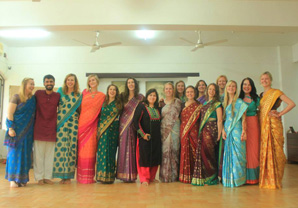 A visit to the Crocodile Farm and the serpentarium run by the Arule tribesman also made the UO students aware of the varieties of reptiles native to India. A trip to the highest point in Pondicherry, at the Lighthouse, left all the participants in awe of the beauty Puducherry is blessed with in its mesmerising coastlines.
A visit to the Crocodile Farm and the serpentarium run by the Arule tribesman also made the UO students aware of the varieties of reptiles native to India. A trip to the highest point in Pondicherry, at the Lighthouse, left all the participants in awe of the beauty Puducherry is blessed with in its mesmerising coastlines.
The overall programme far exceeded expectations those of the UO students. The visit was so successful that all the students have indicated that they would like to return to spend more time on many of the projects run by the Society. Many have also begun to get involved in long-term projects and see themselves as being part of a continuing sustainable relationship between the SAS and UO, and working toward a meaningful collaboration between India and the United States.
